Gympie Terrace was associated with fishing from its beginning. As the neighbourhood was accessed by boat from Tewantin, all of the early residents had their own boat. Fish were plentiful and easy to catch – a delicious fresh meal in the days before shops, before refrigeration.
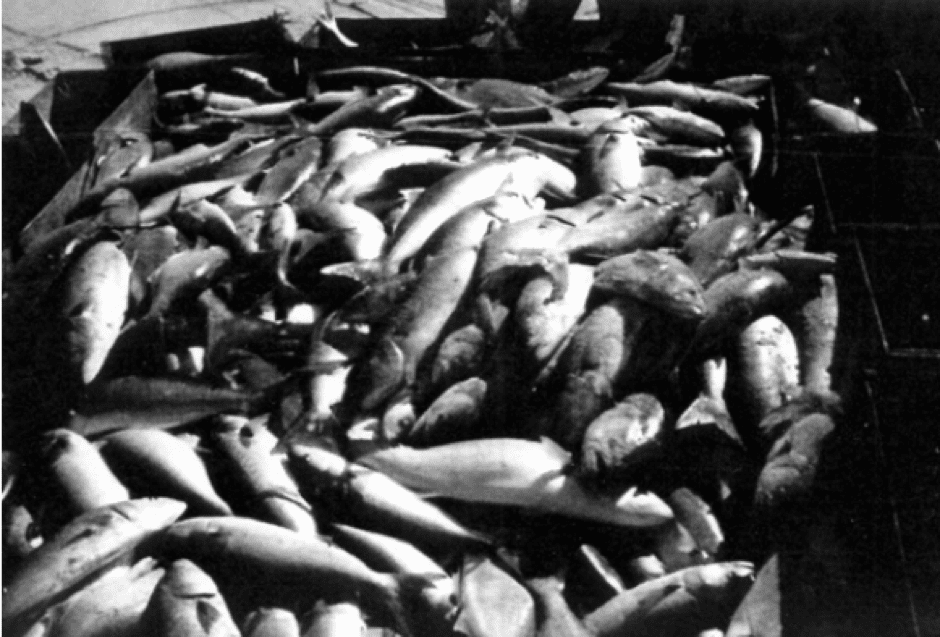
Haul of tailor fish caught by Chaplin & Massoud brothers, c.1954. Image courtesy of Sunshine Coast Libraries
The Noosa estuary and the lakes regularly provide mullet, flathead, bass, trevally, mulloway (jewfish), snapper (mangrove jack), tailor, whiting and bream and occasionally larger fish such as gropers, sharks and sawfish.
Fishing competitions were held on the river from at least the start of the 20th Century and were particularly popular in the 1920s-30s and again from the 1950s to the early 1970s.
Local legend records Joe Keyser as the first professional fisherman on the Noosa River. From around 1872, he caught mullet in Lake Weyba and transported the smoked fish overland to the booming mining town of Gympie, assisted by his son Elijah, pushing and pulling a wheelbarrow. By the end of the century a number of locals were professional fishermen including members of the Gibson, Ely and Burgess families of Gympie Terrace.
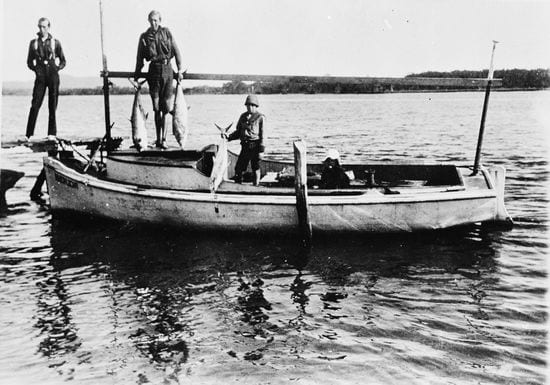
Returning to Gympie Terrace after a day of fishing, early 20th Century
The Massoud family subsisted on fish upon their arrival to Gympie Terrace in 1908. At first, Ted and Edith (Jiddy and Sitty) used lines but soon upgraded to nets and employed a fishing crew, supplying their shop and later Maisie’s Café. As the Massoud brothers grew up, they all became fishermen. George was the first president of the the local Professional Fisherman’s Association and he and Bill held the presidency between them for 25 years. Ivan was believed by many to be the best fisherman in Queensland.
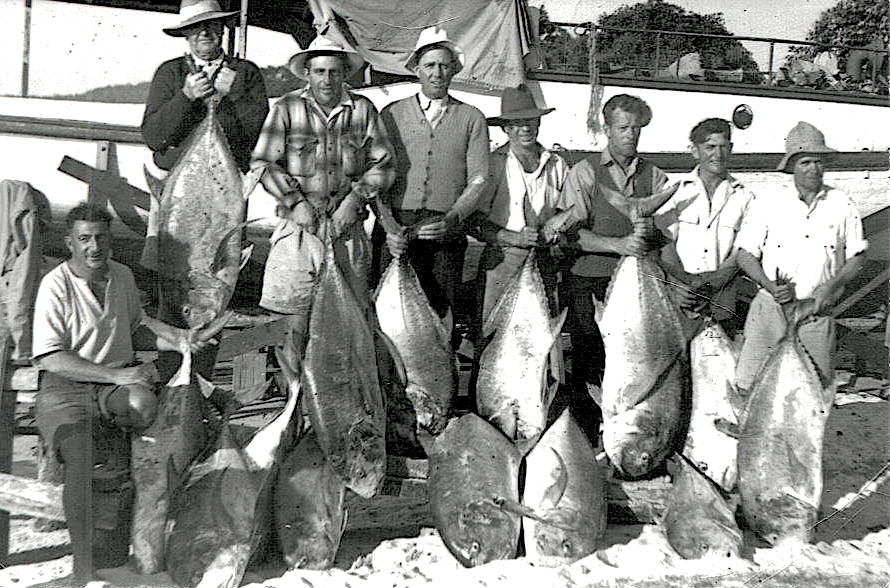
Massoud fishing crew, 1950s
A surge for professional fishing occurred at the end of 1912 when Arthur Finney opened a cold storage chamber and freezing apparatus on the riverbank in Tewantin. Alex Gibson then took over what became known locally as ‘the iceworks’ and in 1917 installed a 9 horsepower Hornsby engine, capable of producing ice and helping the local fisherman to deliver fresh fish to Gympie and even as far as Brisbane. Between 100-300 cases of fish were being exported each week.
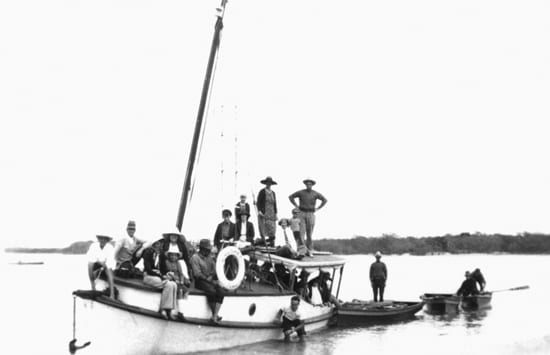
Jack Parkyn’s Miss Tewantin with a fishing crew, 1930s
The reputations of Gympie Terrace and the Noosa River as a perfect fishing spot helped to increase the number of weekenders and holiday makers throughout the 1920s. Motorboats began to replace rowboats and sailboats. By the end of the decade, the enormous catches were regularly remarked upon in the newspapers such as Brisbane’s Sunday Mail.
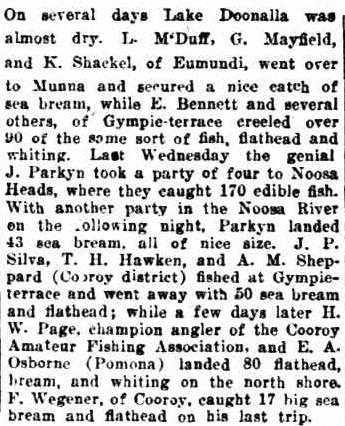
Sunday Mail, 25th August 1929
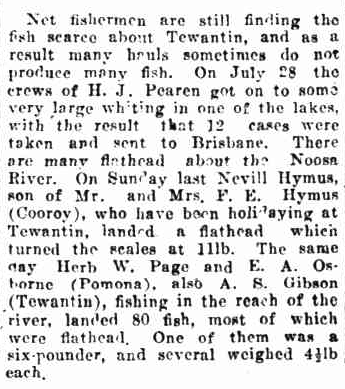
Sunday Mail, 3rd August 1930
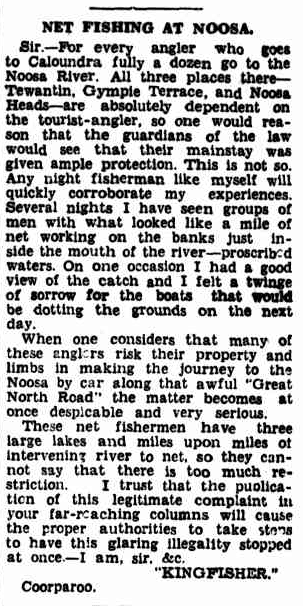
Courier Mail, 9th April 1934
Very large fish were also caught in the Noosa River. In 1934, Howard Parkyn and Alex Gibson caught a 454 pound (206kg) grouper. This was the Queensland record for the largest grouper caught at that time.
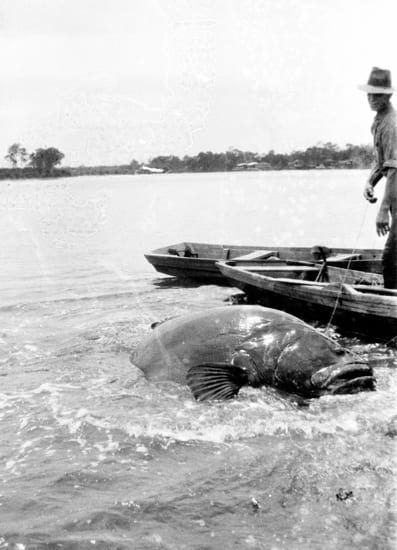
Alex Gibson hauling in the 454lb grouper, 1934
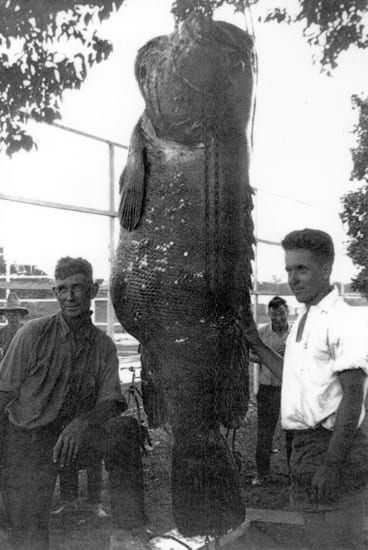
Gibson and Howard Parkyn with their record catch 1934
Oyster fishing was also once a important enterprise. The number and size of middens in what is now Noosaville, and elsewhere along the Noosa River and the lakes, bear witness to the significance of oysters for the local Kabi Kabi people. As early as the 1870s these accumulations of shells were being drawn upon to build roads. By the 1880s oysters were being dredged and transported to Brisbane every week. As early as the 1890s there was concern that their size was not what it once was. Early in the 20th Century the Moreton Bay Oyster Company dredged young oysters from Noosa and moved them to oyster banks in Moreton Bay and Southport, where they grew more rapidly for market. In the 1930s the wider oyster industry went into a depression. There are very few documented references to the Noosa oyster fishery after this time and it is unclear why the Noosa oyster fishery ceased to exist.
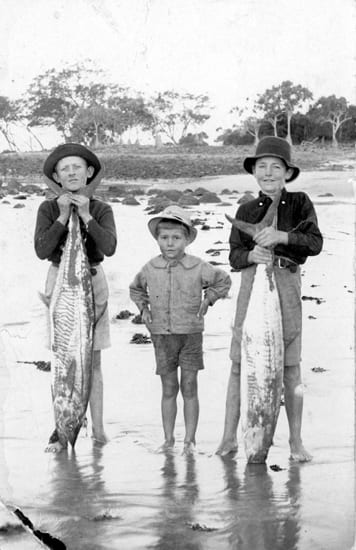
Boys with Mackerel, 1930s
A Fish Marketing Board centre was established in 1936 near the entrance of Lake Doonella to monitor commercial catches. The following year it was relocated to Hilton Terrace with a prominent wharf reaching out into the river. The board helped keep records on what was being caught but its importance was in marketing the produce and assisting with its speedy transport to reliable markets so that fishermen could get a reliable income. Following World War II large scale net fishing began and by 1944 there were 11 permanent net crews of 1-4 men, as well part-time professional fishermen. The focus of net fishing moved out of the Noosa River and into the ocean, however, the Fish Marketing Board remained for a long time, eventually being relocated to Tin Can Bay in 1990.
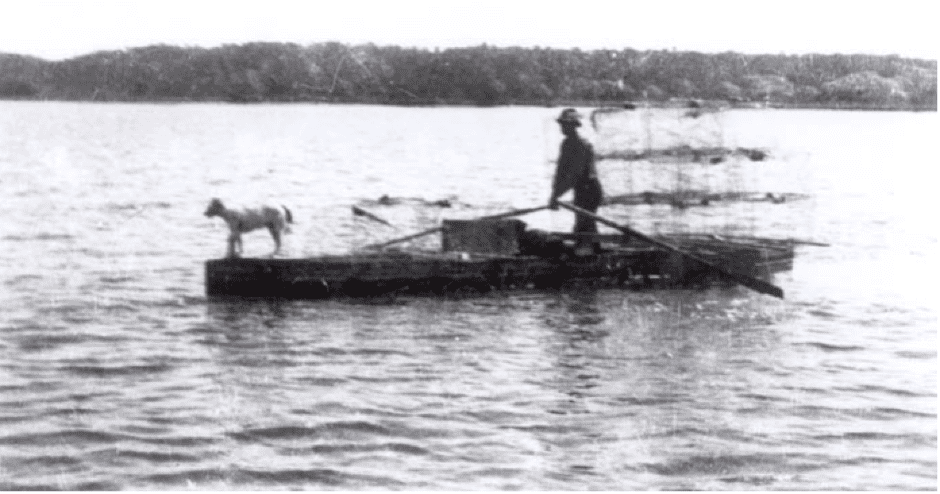
Frederick Gordon , fisherman, with crab pots, circa 1945. Image courtesy of Sunshine Coast Libraries
The number of fish caught by professionals began to decline in the 1960s, perhaps partly due to overfishing as well as a new focus on Laguna Bay but largely due to a shift in the fishing industry towards prawning which increased rapidly in the 1950s. Three species of prawn are regularly found in the estuary: eastern king prawns, greasy back, and school prawns. Numbers were even more unreliable than that of the fish, however, with some annual hauls being more than 200 tonnes, others being as low as 18 tonnes. In 1961 340 tonnes of prawns went through the fish depot in the four-month season. Prawning remained an important industry in the river and lakes into the 1990s but the industry focus had moved into Laguna Bay and south to Mooloolabah decades earlier.
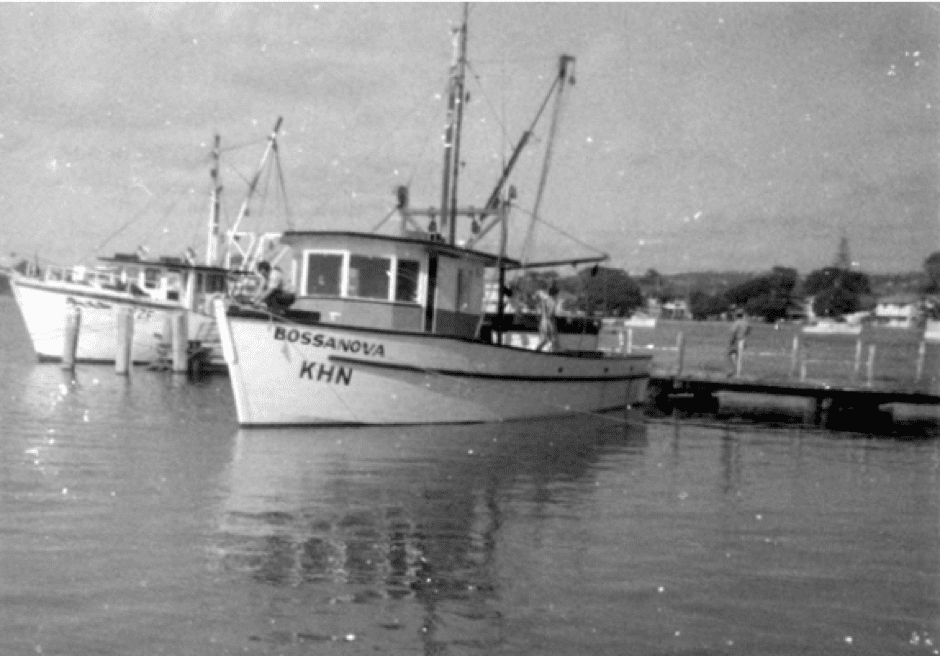
The Trawler Bossanova, built and owned by H.A. ‘Sonny’ Chaplin, pictured at the Fish Board jetty on Gympie Terrace, circa 1960. Image courtesy of Sunshine Coast Libraries
There is a general agreement by recreational and professional fishermen that although numbers and fish size remain good in the Noosa River, they are not as good as they use to be.
For a comprehensive history please read Historical ecology of the Noosa Estuary fisheries.
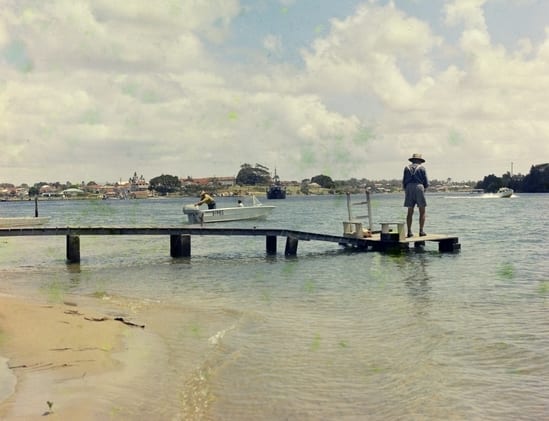
Fishing from a jetty along Gympie Terrace, date unknown
